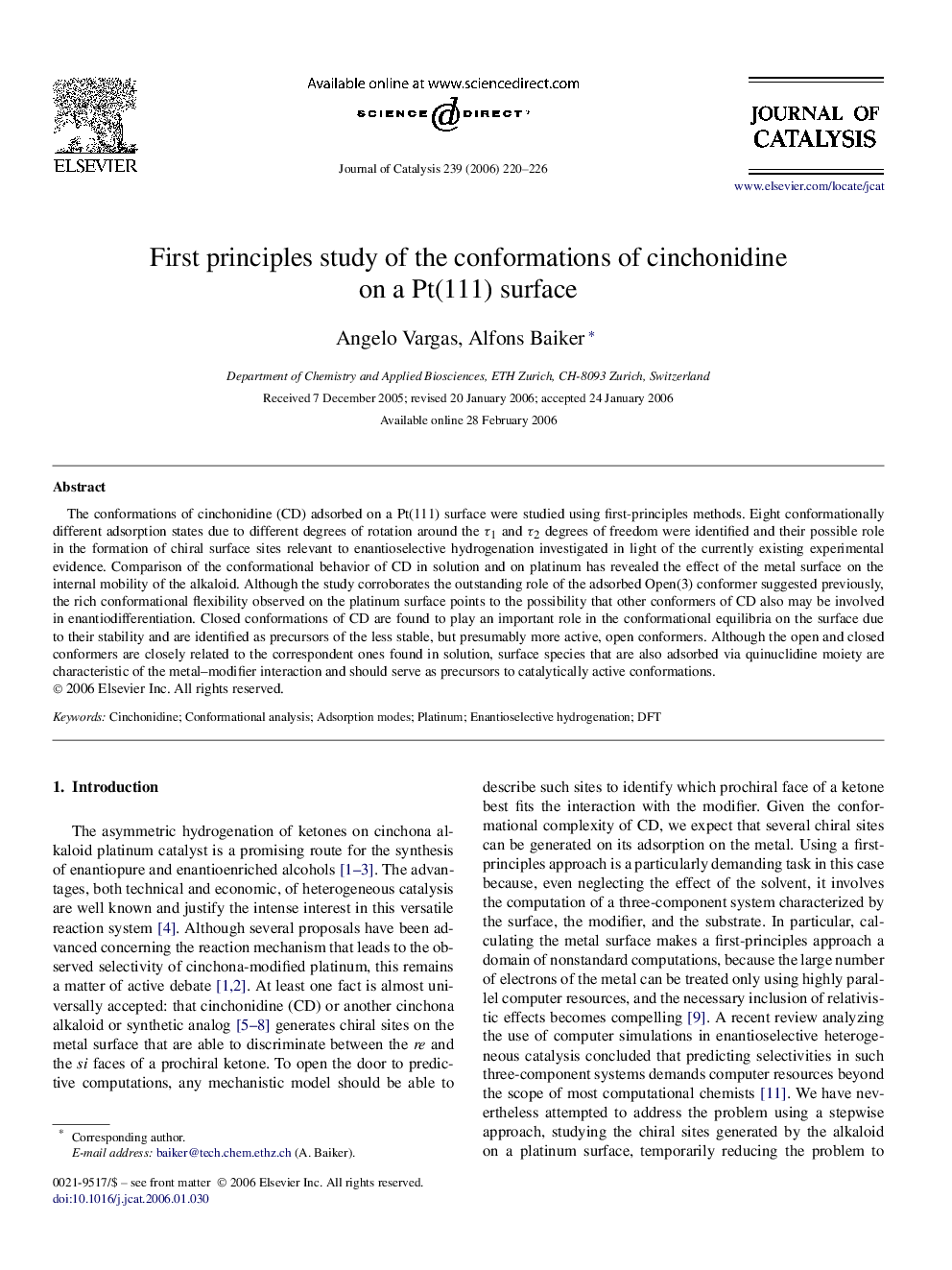| Article ID | Journal | Published Year | Pages | File Type |
|---|---|---|---|---|
| 63378 | Journal of Catalysis | 2006 | 7 Pages |
The conformations of cinchonidine (CD) adsorbed on a Pt(111) surface were studied using first-principles methods. Eight conformationally different adsorption states due to different degrees of rotation around the τ1τ1 and τ2τ2 degrees of freedom were identified and their possible role in the formation of chiral surface sites relevant to enantioselective hydrogenation investigated in light of the currently existing experimental evidence. Comparison of the conformational behavior of CD in solution and on platinum has revealed the effect of the metal surface on the internal mobility of the alkaloid. Although the study corroborates the outstanding role of the adsorbed Open(3) conformer suggested previously, the rich conformational flexibility observed on the platinum surface points to the possibility that other conformers of CD also may be involved in enantiodifferentiation. Closed conformations of CD are found to play an important role in the conformational equilibria on the surface due to their stability and are identified as precursors of the less stable, but presumably more active, open conformers. Although the open and closed conformers are closely related to the correspondent ones found in solution, surface species that are also adsorbed via quinuclidine moiety are characteristic of the metal–modifier interaction and should serve as precursors to catalytically active conformations.
